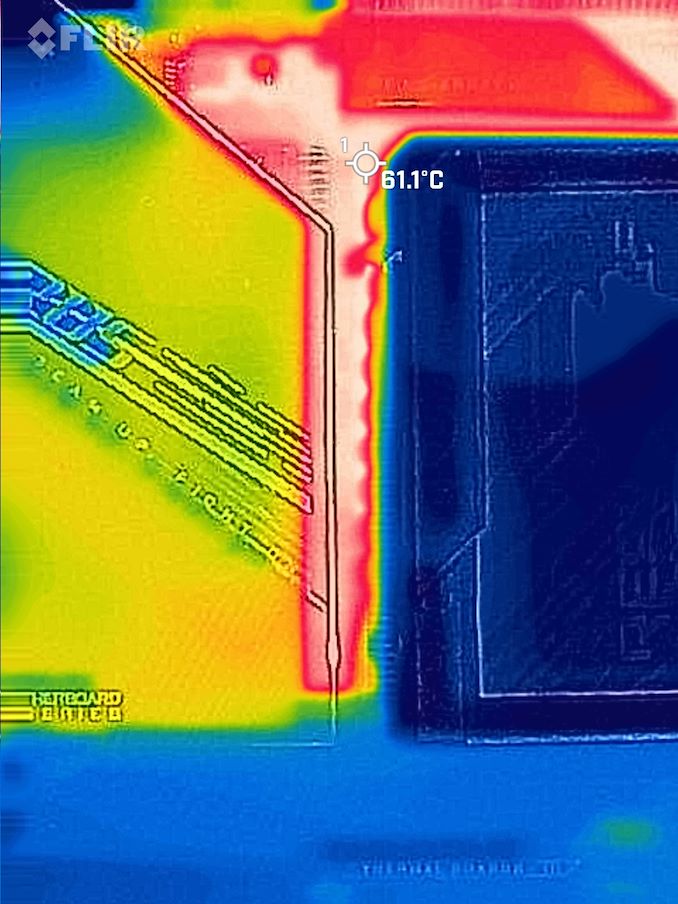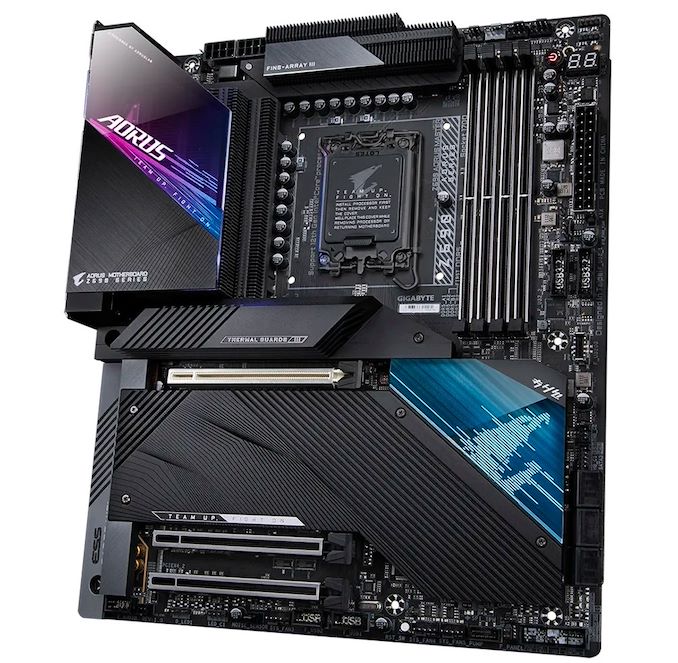The GIGABYTE Z690 Aorus Master Mobo Review: 10GbE Rounds Out A Premium Board
by Gavin Bonshor on February 25, 2022 9:00 AM EST_678x452.jpg)
The latest motherboard to grace our test bench is the GIGABYTE Z690 Aorus Master, which hails from its Aorus gaming series and sits just one step below its Aorus Xtreme models. Some of its most notable features include 10 Gigabit Ethernet and Wi-FI 6E networking, USB 3.2 G2x2 connectivity, as well as plenty of storage capacity consisting of five M.2 slots and six SATA ports. The Aorus Z690 Master also boasts support for DDR5-6400 memory and an impressive 20-phase power delivery designed for overclockers looking to squeeze out extra performance. Does the GIGABYTE Z690 Aorus have enough about it to justify the $470 price tag? We aim to find out in our latest Z690 motherboard review.
Across GIGABYTE's many different series of motherboards for Z690, including the Aorus for enthusiasts and gaming, the Gaming series for gamers on a tighter budget, the Aero for content creators, and the UD (Ultra Durable) series for the entry-level. GIGABYTE, in general, has a good degree of separation for its product ranges, which makes it easier for consumers to distinguish between each of its models from the pretty large stack of Z690 models it has. Each of its different series occupies a different price point and comes equipped with a varying level of features.
GIGABYTE Z690 Aorus Master Overview
Focusing on the GIGABYTE Z690 Aorus Master motherboard, it's the most premium of the company's Z690 models, save its flagship Xtreme series duo, the Z690 Aorus Xtreme, and the water block inclusive Z690 Aorus Xtreme WaterForce. As the Master series is a premium model, it's equipped with an equally premium-looking aesthetic, with waves of black heatsinks covering the all-black PCB, as well as multiple areas of integrated RGB LED lighting. It has a typical Aorus theme throughout, which hasn't changed all that much over the last couple of years.
The GIGABYTE Z690 Aorus Master has lots to offer users looking for a high-end Z690 motherboard, including support for the latest DDR5 memory. This includes speeds of up to DDR5-6400 supported out of the box, including 128GB across four memory slots. Storage support is also equally impressive, with support for up to five M.2 slots (four PCIe 4.0 x4 and one PCIe 3.0 x4), as well as six SATA ports that are capable of installing RAID 0, 1, 5, and 10 arrays. Despite its premium design, GIGABYTE includes just one full-length PCIe 5.0 x16 slot, with two full-length PCIe 3.0 x4 slots, instead of offering the capability for PCIe 5.0 x8/x8.
GIGABYTE also uses the Z690 chipset's native support in other ways, including support for two USB 3.2 G2x2 Type-C ports (one rear panel, one header), as well as a total of eleven USB ports on the rear panel (two Type-C, nine Type-A) which is perfect for users with lots of USB devices. Also featured is a quality networking array, including a single 10 Gigabit Ethernet controller, along with an Intel Wi-Fi 6E CNVI that supports both the 6 GHz band and BT 5.2 devices. The onboard audio solution also consists of a premium Realtek HD audio codec and ESS DAC chip, and a single DisplayPort 1.2 video output for users planning to use Intel's integrated Xe Iris graphics.
Designed with performance in mind, GIGABYTE advertises a large 20-phase power delivery split into a 19-phase direct design for the CPU with 105 A power stages and a single-phase 70 A power stage designated for the SoC. This is more than enough for overclocking Alder Lake to its limits, with the Aorus Master being designed to offer enthusiast-level performance combined with its Aorus 'gaming' features.

The GIGABYTE Z690 Aorus Master undergoing our VRM thermal testing
Quickly analyzing the raw performance of the GIGABYTE Z690 Aorus Master, it showed its competitiveness against other Z690 models in all three of our primary testing areas, including system, compute, and gaming performance. In our overclock testing, the Z690 Aorus Master displayed true character with very tight VDroop control on the CPU VCore voltage at full-load, and it was equally impressive in our VRM thermal testing.
The GIGABYTE Z690 Aorus Master has an MSRP of $470, and at the time of writing, it is available at Newegg for this price. As it stands, there's some competition at the price point, including the ASRock Z690 PG Veloctia ($470), the ASUS ROG Strix Z690-E Gaming WIFI ($470), and the MSI MEG Z690 Unify ($490), with each of them all deserving of merit in their own way. The advantage that GIGABYTE has over the models above is that it includes 10 GbE, which is a feature that's typically reserved for the (very expensive) flagship Z690 boards. With its impressive array of features, capability, and premium design, the GIGABYTE Z690 Aorus Master ticks many boxes for under $500, but can it walk the walk? That's the biggest question that we intend on answering in this review.
Read on for our extended analysis.











35 Comments
View All Comments
Taniyakhan - Wednesday, March 2, 2022 - link
The issues you share are very good and many people are interested in it. it gave me lots of useful information. help me expand my knowledge.https://www.modelescortsindelhi.com/
TheinsanegamerN - Tuesday, March 8, 2022 - link
I rmemeber when asrock's taichi was $330 and had 10GBe plus two 1GBe and every bell and whistle you could want.abruzzee - Saturday, May 7, 2022 - link
Hi. Did you manage ti get them working? I want to buy this mobo but not sure about ram compatiblity. Typoohbear - Tuesday, May 24, 2022 - link
For those saying this mobo is expensive, how often do you upgrade your cou/mobo/RAM? Im still rocking a 4790k from 2014. Thats 8 years! Upgrading to Alder Lake 12700k with a mobo in the $500 is completely acceptable as i plan on keeping this system another 8 years. $500 for mobo is peanuts over an 8 year period.busupaqe - Monday, June 6, 2022 - link
good review ;) thx a lothttps://blackporn.fun